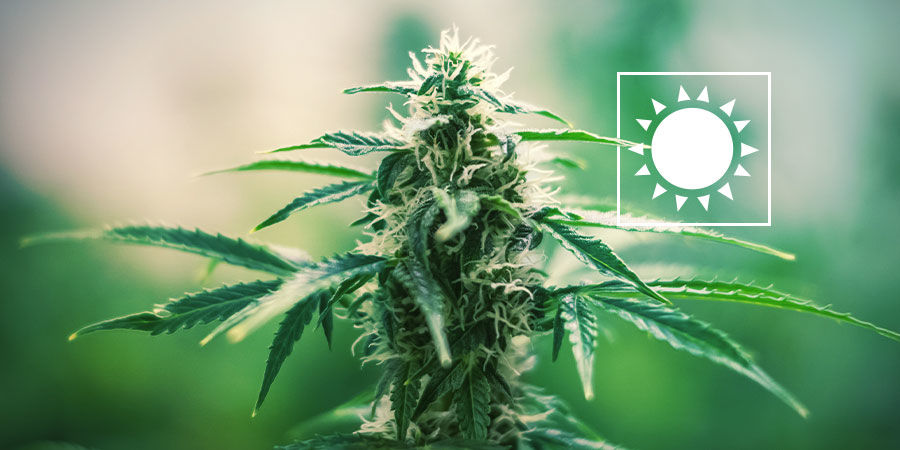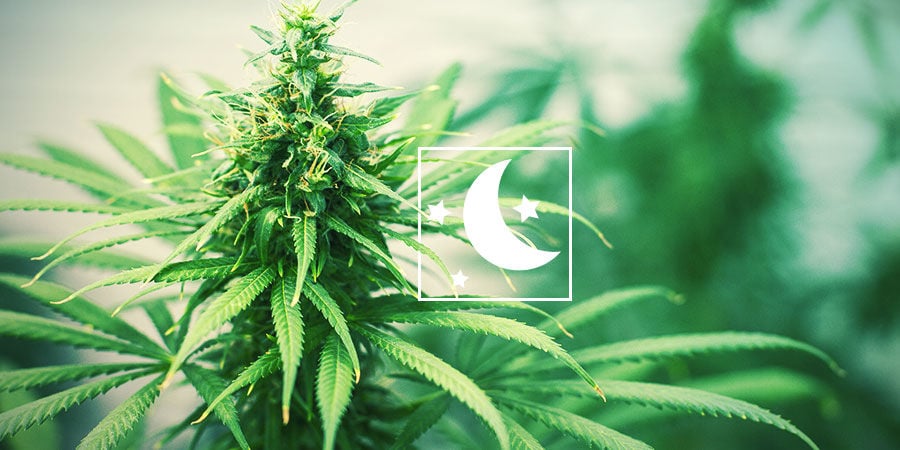-
Seed Shop
-
Feminized
Cannabis seeds -
Autoflowering
Cannabis Seeds -
Regular
Cannabis Seeds -
F1 Hybrid
Cannabis Seeds -
CBD
Cannabis Seeds -
Zamnesia
Cannabis Seeds
-
Top 10’s
- Top 10 Feminized Seeds
- Top 10 Autoflowering Seeds
- Top 10 Regular Seeds
- Top 10 USA Cannabis Strains
- Top 10 Zamnesia Seeds
-
Favourites
- Beginner Strains
- Below 1% THC
- Classic Cannabis Strains
- Cup Winners
- F1 Hybrids
- Fast-Flowering Strains
- High CBD Strains
- High THC Strains
- Mix Packs
- Zamnesia Exclusive Collabs
-
-
Headshop
-
Vaporshop
- Spare Parts & Accessories
- AirVape X
- AirVape XS GO (2021)
- Arizer Air MAX
- Arizer Extreme Q
- Arizer Solo 2
- Arizer V-Tower
- Arizer XQ2
- Boundless CFC 2.0 Vaporizer
- Boundless CFX
- Boundless TERA (V3)
- CRAFTY+
- DaVinci IQ2
- DaVinci IQC
- DaVinci MIQRO
- Dr. Dabber Boost EVO
- Dr. Dabber Stella
- DynaVap Omni 2021
- DynaVap VapCap "M" PLUS 2023
- DynaVap VapCap 'M' 2021
- DynaVap VonG (i) Titanium
- Dynavap The "B" Series
- Eagle Bill
- Firefly 2+
- Flowermate Aura
-
Healthshop
-
Smartshop
-
Shroomshop
-
Growshop
-
Seed Shop
All CategoriesSeed Shop
- Autoflowering Cannabis Seeds
- Feminized Cannabis Seeds
- Zamnesia Seeds
- Zamnesia's Top 10
- CBD Seeds
- F1 Hybrids
- Seed Banks
- Mix Packs
-
Popular Strain Types
- Zamnesia Exclusive Collabs
- Classic Cannabis Strains
- Amnesia Seeds
- Haze Seeds
- Skunk Seeds
- Kush Seeds
- Purple Seeds
- Blueberry Seeds
- Cheese Seeds
- Diesel Seeds
- White Widow Seeds
- Gorilla Seeds
- Northern Lights Seeds
- Granddaddy Purple Seeds
- OG Kush Seeds
- Blue Dream Seeds
- Lemon Haze Seeds
- Bruce Banner Seeds
- Gelato Seeds
- Sour Diesel Seeds
- Jack Herer Seeds
- Girl Scout Cookies Seeds (GSC)
- Wedding Cake Seeds
- Zkittlez Seeds
- Pineapple Express Seeds
- Chemdawg Seeds
- Hindu Kush Seeds
- Mimosa Seeds
- Cup Winners
- F1 Hybrids
- Mix Packs
- Beginner Strains
- High THC Strains
- Fast-Flowering Strains
- Regular Cannabis Seeds
- USA Cannabis Strains
- Cup Winners
- Seedfinder
-
Vaporshop
All CategoriesVaporshop
- Top 10 Vaporizers
- Spare Parts & Accessories
- AirVape X
- AirVape XS GO (2021)
- Arizer Air MAX
- Arizer Extreme Q
- Arizer Solo 2
- Arizer V-Tower
- Arizer XQ2
- Boundless CFC 2.0 Vaporizer
- Boundless CFX
- Boundless TERA (V3)
- CRAFTY+
- DaVinci IQ2
- DaVinci IQC
- DaVinci MIQRO
- Dr. Dabber Boost EVO
- Dr. Dabber Stella
- DynaVap Omni 2021
- DynaVap VapCap "M" PLUS 2023
- DynaVap VapCap 'M' 2021
- DynaVap VonG (i) Titanium
- Dynavap The "B" Series
- Eagle Bill
- Firefly 2+
- Flowermate Aura
- Flowermate Cap Pro
- Flowermate Slick
- Flowermate V5.0S Pro
- G Pen Connect
- G Pen Elite II
- G Pen Micro+
- G Pen Pro
- G Pen Roam
- Hydrology9 Vaporizer
- Hyer Big-E Rig
- MIGHTY
- MIGHTY+
- PAX Mini
- PAX Plus
- PLENTY
- Pax 3 Vaporizer
- Puffco Peak PRO Smart Rig
- Puffco Peak Smart Rig
- Puffco Plus
- Storm Vaporizer
- The Proxy (Puffco)
- VOLCANO CLASSIC
- VOLCANO HYBRID
- Vape-Lifter
-
Smartshop
All CategoriesSmartshop
- Top 10 Smartshop
- Zamnesia Gift Cards
- After Party
- Aphrodisiacs
- Aromatherapy
- Blue Lotus
- CBD Vape Juice
- Capsule Machines
- Crystals, Gemstones & Minerals
- Dream Herbs
- Drug Tests
- Extracts
- Happy Caps
- Herbal Tea
- Herbs & Seeds
- Incense
- Kanna
- Kratom
- LSA Seeds
- Mescaline Cacti
- Microdosing
- Nootropics
- Relaxing
- Salvia divinorum
- Smart Seeds
- Stimulants
- Supplements
- Tinctures
- Vape Herbs
-
TRIBE
All CategoriesTRIBE
- My Membership
- Spend Gift Points
- TRIBE Sale
- Exclusive products
- Earn Extra Gift Points
-
TRIBE
- Early Access
- Refer a Friend
- Information
-
TRIBE
-
Language
 United States
United States
Thursday, 17 July and Wednesday, 23 July 2025*
Photoperiod vs. Autoflowering Cannabis: Which Is Right For You?
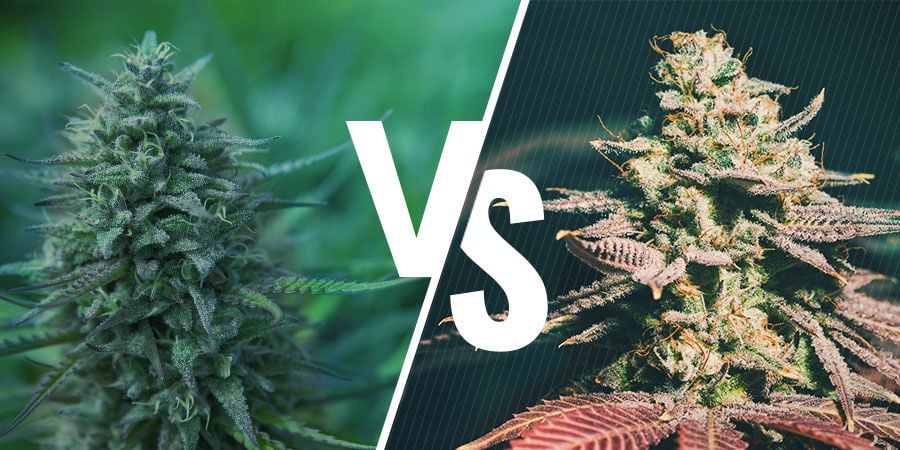
Photoperiod and autoflowering cultivars are different in more ways than one. Autoflowers grow with immense speed and are easy to cultivate. In contrast, photoperiod strains offer much larger yields but are harder to grow. Which is right for you?
Cannabis is one heck of a complex plant. The species produces over 100 cannabinoids, over 200 terpenes, and many other interesting chemical constituents. The ratios of these molecules can vary between strains, and even between plants of the same strain. Adding to the complexity is the number of cultivars on the market. There are around 800 known strains, but it's likely that many more exist.
These cultivars stem from landrace genetics obtained from different regions of the planet. Breeders select landraces for hybridisation based on specific desirable traits. Due to evolutionary adaptation, landraces have developed extraordinary genetic differences. One such divide occurs between photoperiod and autoflowering genetics.
These traits alter the flowering time and difficulty of cultivation between strains, along with other factors. Choosing between photoperiod and autoflowering cultivars is one of the first decisions that many growers make well before placing seeds into the soil. In this article, we'll cover the key features of both types of cannabis. Then, we'll delve into the pros and cons of each to discover which is right for you.
PHOTOPERIOD VERSUS AUTOFLOWERING CANNABIS: THE DIVIDE
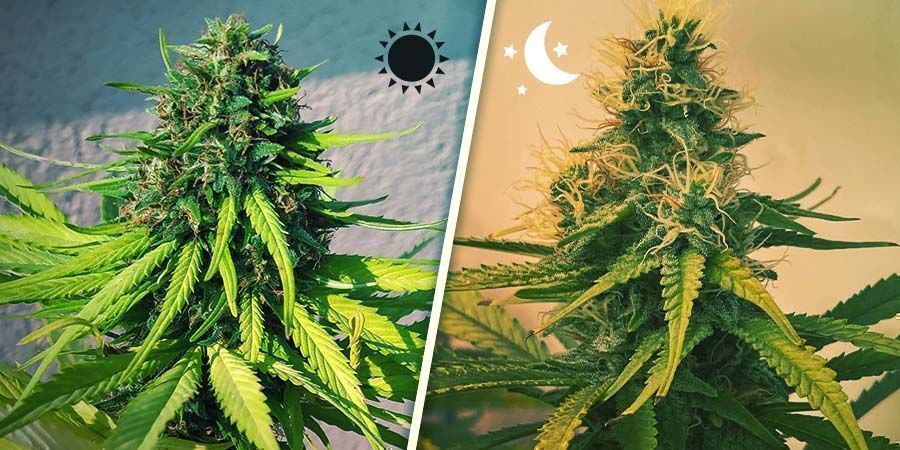
The primary difference between photoperiod and autoflowering varieties is how they initiate flowering. The vegetative phase is the first major stage of the growing cycle, and occurs after a brief seedling phase. During this time, plants are busy consuming nutrients, expanding their root systems, and producing large fan leaves.
After the vegetative phase, plants begin to produce flowers. These structures house glandular trichomes that produce valuable cannabinoids and terpenes.
Cannabis is an annual plant, meaning it grows from seed, matures, and dies over a single season. Photoperiod and autoflowering plants detect seasonal changes in different ways; this is because they evolved in, and adapted to, different environments.
The very word "photoperiod" refers to the time frame of light exposure. These cultivars shift into flowering mode when their light cycle changes—an entirely natural response. Outdoors, this happens when summer transitions into autumn and the days get shorter. Indoors, growers need to initiate flowering by reducing the amount of light their plants receive. Photoperiod strains take considerably longer to reach harvest, however, they often produce much larger yields and feature higher levels of cannabinoids.

In contrast, autoflowering varieties don't require a change in light cycle to initiate flowering. Instead, they are genetically programmed to flower after a certain amount of time. Autoflowering plants boast rapid growth and ease of maintenance. They grow much smaller than most photoperiod strains, and therefore usually produce a lower yield.
COMPARING AUTOFLOWERING AND PHOTOPERIOD CANNABIS
Both photoperiod and autoflowering cultivars pose a long list of advantages, as well as a couple disadvantages. They differ in many ways, including speed, yield, difficulty, and even appearance. However, both are capable of producing top-quality bud!
Let's dive deeper into the differences between these types of cannabis.
EVERYTHING ABOUT AUTOFLOWERING CANNABIS
Autoflowering varieties are favoured by growers looking to obtain a high-quality harvest as fast as possible. Growers value autoflowers for the short amount of time it takes them to explode from seed to harvest. Their small size also makes them compatible with stealthy indoor grows and outdoor guerrilla grow operations. Check out the list below to discover their traits in full detail. If they appeal to you, take a look at our 10 best autoflowering seeds.
GROWING
All autoflowering hybrids contain genetics from a cannabis subspecies known as ruderalis. Cannabis ruderalis is native to Eastern Europe and Central Asia, and therefore evolved with a much shorter growing season than her photoperiod sativa and indica counterparts. Ruderalis plants had to germinate, vegetate, and flower before the first frost arrived. In general, autoflowering varieties will go from seed to harvest in around 8–12 weeks. The trait is especially useful for covert growers looking to maintain discretion, and commercial cultivators looking for a quick turnover.
Autoflowering plants don't require as many nutrients, but do need a well-aerated potting mix. Add perlite to the growing medium to ensure proper airflow.
APPEARANCE
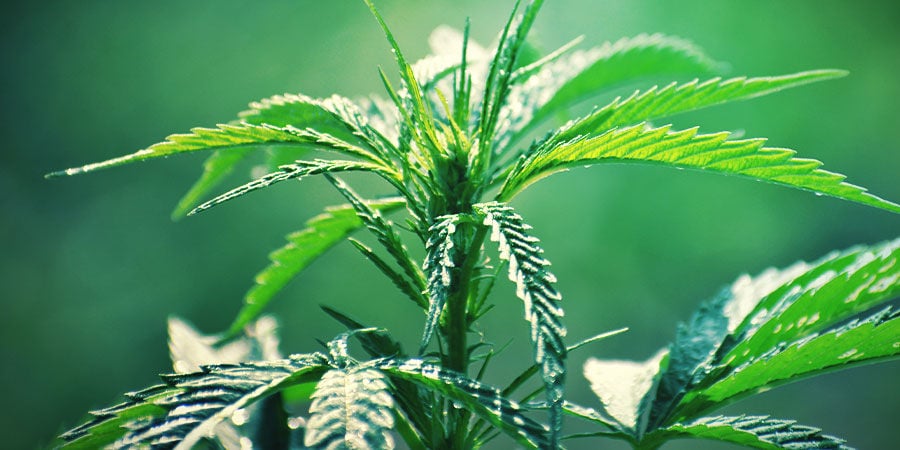
Pure Cannabis ruderalis varieties are the smallest subspecies of cannabis. They feature minimal bud sites and low levels of cannabinoids. They produce small leaves featuring three primary fingers and two tiny, backward-facing fingers. Pure ruderalis is only really grown for breeding purposes.
Breeders have hybridised high-performing photoperiod strains with ruderalis genetics to endow them with the autoflowering trait. These hybrids typically grow to 60–100cm in height. However, some cultivars are known to peak at 130cm. They are stocky, and many growers opt to use methods such as low-stress training to alter their shape and promote lateral growth.
YIELD
Speed and ease of growth come with a tradeoff; autoflowering yields are mostly smaller than those obtained from photoperiod varieties. Autoflowering cultivars also received the trait of reduced productivity. But, it's not all bad news. Growers typically achieve a yield of around 400g/m² indoors. Their smaller size also means cultivators can grow many more plants within a particular space.
DIFFICULTY
Autoflowering strains are easy to grow. Like, super easy. A colder and more brutal climate made ruderalis a hardy beast; she's very forgiving when it comes to beginner error. Autoflowers can take a beating—they're quite hard to kill. They are often found growing wild in soil with few nutrients. This trait makes them ideal for beginner growers.
PROS
- Easy to grow
- Fast life cycle
- Greater variety than before
- Covert size
- Resilient
CONS
- Small size equates to lower yields
- Slightly lower potency than most photoperiod strains
- Easier to overfeed
- Can’t use high-stress training techniques
EVERYTHING ABOUT PHOTOPERIOD CANNABIS
Photoperiod strains outperform autoflowering varieties when it comes to size and productivity. They are slightly trickier to grow than autos, but the extra work is always worth it. Learn about the traits of photoperiod strains below; and check out our top 10 feminized photoperiods if they tickle your fancy!
GROWING
Photoperiod strains are deemed slightly harder to grow than autoflowers, chiefly because they require a change in light cycle to force them to flower. They also grow much taller and require more maintenance in the way of pruning and shaping.
However, growers have more control over photoperiod strains. These plants will continue to vegetate indefinitely, so long as they receive at least 18 hours of light per day. This allows indoor growers to raise huge plants before switching the light cycle to 12 hours on and 12 hours off to begin the flowering phase.
Alternatively, cultivators can grow speedy and tiny plants by starting them on a light cycle of 12 hours on and 12 hours off until harvest. This creates small plants that are easy to conceal and fast to yield.
The growing traits of photoperiod cultivars vary wildly; this is due to the genetic diversity present within the category. Botanists classify photoperiod strains into two subspecies: indica and sativa.
Overall, sativa strains achieve their full potential outdoors. Some varieties can reach tree-like heights of 3m. In contrast, indica strains grow to around 100–150cm and thrive both indoors and outdoors.
APPEARANCE
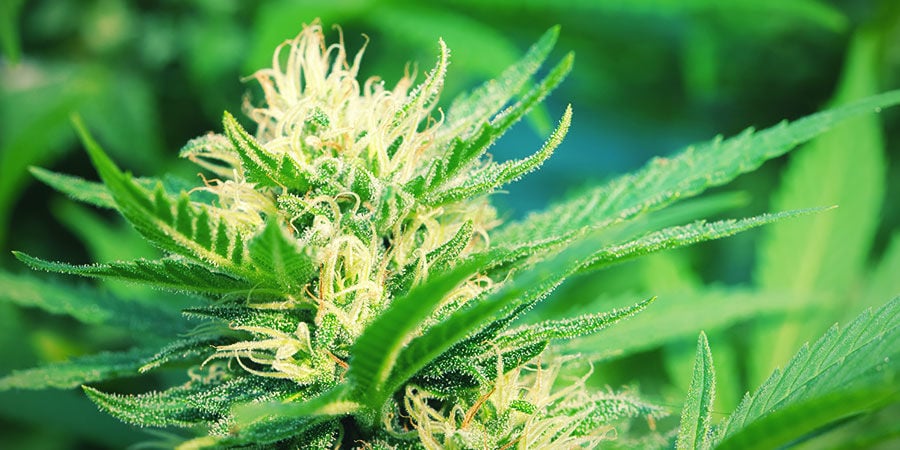
Sativa plants grow tall, feature more space between nodes, and produce fan leaves with slender fingers. In contrast, indica plants are bushier, produce more lateral growth, and feature fan leaves with broad fingers.
Mainstream cannabis culture preaches the idea that sativa plants produce an energetic high, whereas indica varieties are more relaxing. While this is true to some extent—primarily due to specific terpene profiles—it's not always the case. Morphological characteristics don't always determine the chemovar (chemical variety) of a cultivar.
Additionally, 100% pure indica or sativa strains are quite rare. Most available cannabis varieties are hybrids of both, and feature either a sativa-dominant or indica-dominant genetic profile. Strains tend to take on the appearance of whichever subspecies is more dominant in their genetic makeup.
YIELD
Photoperiod plants produce varying yields. Pure sativa and sativa-dominant strains typically pump out more flowers than indica varieties. If raised outdoors, growers can expect anywhere between 1–4kg/plant from the most productive sativa varieties. Smaller sativas produce around 500–600g/m² indoors.
Indica varieties typically churn out between 400–600g/m² indoors. Outdoors, most specimens offer anywhere between 400–2000g/plant, depending on the cultivar.
DIFFICULTY
Photoperiod strains require more care and attention. Beginners may choose a photoperiod strain for their first grow and achieve great success, but starting in the autoflowering world is a smoother entry into growing.
Growers need to plan out how long they want to veg their crop for, and prepare to change up the light cycle accordingly. They'll also need to stay on top of pruning and training to prevent their plants from growing out of control.
Some photoperiods are also capable of producing massive colas. Although this is desirable, growers need to dial in appropriate humidity during flowering and drying to avoid mould formation.
PROS
- Great production potential
- Higher cannabinoid content than autoflowers
- Greater variety of strains
- Opportunities for cloning/indefinite vegging
- More “authentic” experience
CONS
- Greater difficulty level
- Takes longer from seed to harvest
- Can be inconvenient/difficult to maintain
- Indoor growers are responsible for inducing bloom
PICK THE TYPE OF CANNABIS THAT BEST SUITS YOUR NEEDS
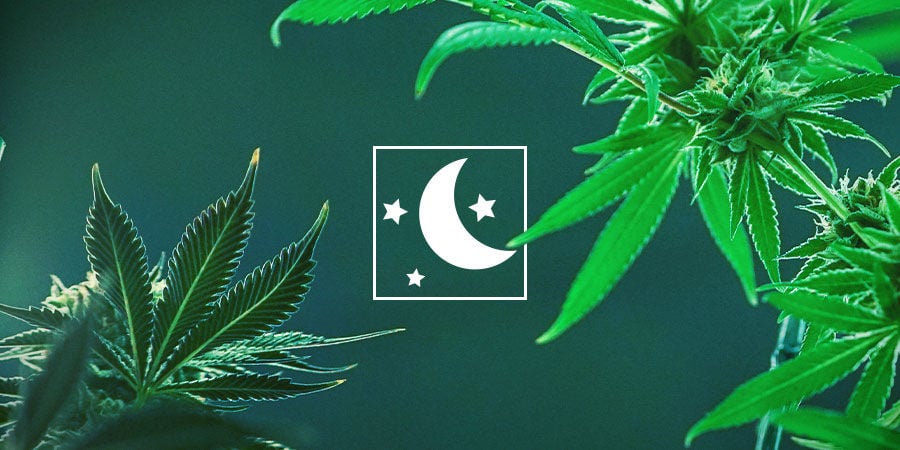
When it comes to choosing between autoflowers and photoperiod cannabis strains, there is no right or wrong choice. It comes down to a matter of personal preference and resources. Space is a significant limiting factor with photoperiod strains, and thus growers looking to cultivate in, say, a small apartment might be better off selecting an autoflower.
On the other hand, growers with the luxury of a big garden have the opportunity to unleash a sativa beast. However, they might instead opt for an autoflower that stays level with companion plants to keep things stealthy.
Now that you know the traits of each type of cannabis, you should feel ready and empowered to make your choice. Good luck, and happy growing!

- France
- Germany
- International
- Italy
- Netherlands
- Spain
- United Kingdom
- United States
You might also like
-
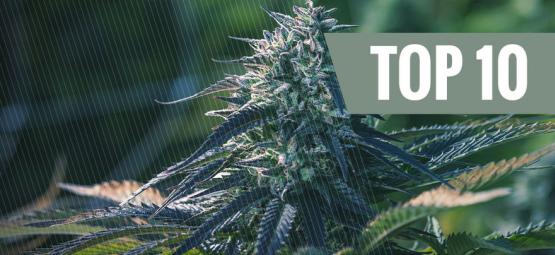
 6 min
23 March 2021
Top 10 Reasons To Grow Autoflowering Cannabis
The development of autoflowering strains revolutionized cannabis cultivation. Autos require minimal effort, finish ultra-fast and don’t need special lighting schedules - and yet produce a high qua ...
6 min
23 March 2021
Top 10 Reasons To Grow Autoflowering Cannabis
The development of autoflowering strains revolutionized cannabis cultivation. Autos require minimal effort, finish ultra-fast and don’t need special lighting schedules - and yet produce a high qua ...
-
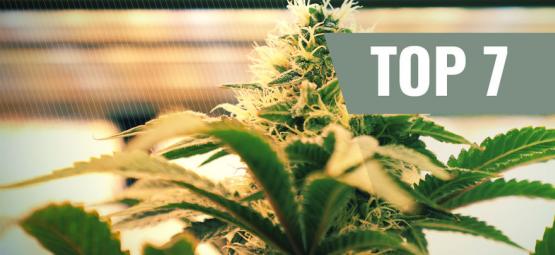
 4 min
20 January 2019
Top 7 Lighting Factors For Growing Marijuana
Growing cannabis indoors gives you control over the environment. The need for precise lighting will make or break your harvest, so it also places more responsibility on you. Here are 7 lighting factor ...
4 min
20 January 2019
Top 7 Lighting Factors For Growing Marijuana
Growing cannabis indoors gives you control over the environment. The need for precise lighting will make or break your harvest, so it also places more responsibility on you. Here are 7 lighting factor ...
-
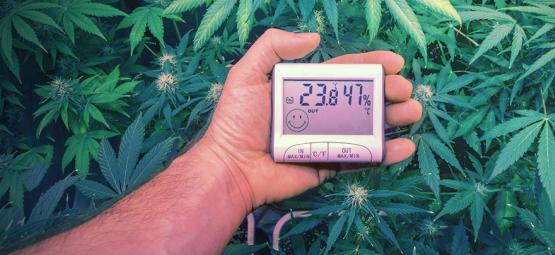
 4 min
2 November 2016
The Ultimate Temperatures For Growing Cannabis
Optimal temperatures are essential for creating top-notch bud. Let's find out the details behind the thriving temps of cannabis plants, and how to achieve them. ...
4 min
2 November 2016
The Ultimate Temperatures For Growing Cannabis
Optimal temperatures are essential for creating top-notch bud. Let's find out the details behind the thriving temps of cannabis plants, and how to achieve them. ...
-
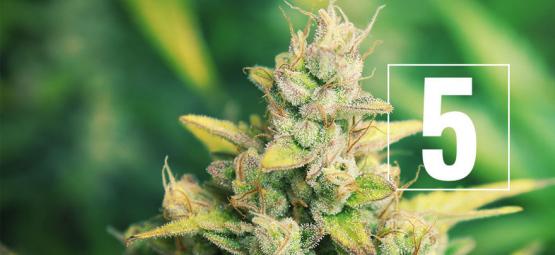
 3 min
10 August 2015
5 Myths About Growing Cannabis - Debunked
Despite what many think, growing cannabis is dead easy. Sure, it is a tricky beast to master, but any novice can put seed to soil and still get results. However, many potential growers are put... ...
3 min
10 August 2015
5 Myths About Growing Cannabis - Debunked
Despite what many think, growing cannabis is dead easy. Sure, it is a tricky beast to master, but any novice can put seed to soil and still get results. However, many potential growers are put... ...
Categories
-
Seed Shop
- Feminized Cannabis Seeds
- Autoflowering Cannabis Seeds
- Regular Cannabis Seeds
- F1 Hybrids
- CBD Seeds
- Zamnesia Seeds
- Top 10 Autoflowering Seeds
- Top 10 Regular Seeds
- Top 10 USA Cannabis Strains
- Top 10 Zamnesia Seeds
- Top 10 Feminized Seeds
- Beginner Strains
- Below 1% THC
- Classic Cannabis Strains
- Cup Winners
- F1 Hybrids
- Fast-Flowering Strains
- High CBD Strains
- High THC Strains
- Mix Packs
- Zamnesia Exclusive Collabs
- Amnesia Seeds
- Blueberry Seeds
- Cheese Seeds
- Diesel Seeds
- Gorilla Seeds
- Haze Seeds
- Kush Seeds
- Purple Seeds
- Skunk Seeds
- White Widow Seeds
- Northern Lights Seeds
- Granddaddy Purple Seeds
- OG Kush Seeds
- Blue Dream Seeds
- Lemon Haze Seeds
- Bruce Banner Seeds
- Gelato Seeds
- Sour Diesel Seeds
- Jack Herer Seeds
- Girl Scout Cookies Seeds (GSC)
- Wedding Cake Seeds
- Zkittlez Seeds
- Pineapple Express Seeds
- Chemdawg Seeds
- Hindu Kush Seeds
- Mimosa Seeds
- Zamnesia Seeds
- ACE Seeds
- Advanced Seeds
- Amsterdam Genetics
- Anesia Seeds
- Auto Seeds
- Barney's Farm
- Big Buddha Seeds
- Bomb Seeds
- BSB Genetics
- BSF Seeds
- Buddha Seeds
- Bulldog Seeds
- Cali Connection
- Cannarado Genetics
- CannaBioGen
- CBD Crew
- CBD Seeds
- Compound Genetics
- The Dank Seeds
- Dark Horse Genetics
- Delicious Seeds
- Devil Harvest Original
- Dinafem
- DNA Genetics
- Doctor's Choice
- Dr. Underground
- Dutch Passion
- Elite Seeds
- Eva Seeds
- Exotic Seed
- Expert Seeds
- FastBuds
- Female Seeds
- Fenocan
- Flash Auto Seeds
- French Touch Seeds
- Garden of Green
- GeneSeeds
- Genehtik Seeds
- G13 Labs
- Grass-O-Matic
- Greenhouse Seeds
- Grow Your Own (DNA)
- Growers Choice
- Homegrown Fantaseeds
- House of the Great Gardener
- Humboldt Seed Company
- Humboldt Seed Organization
- Kalashnikov Seeds
- Kannabia
- The Kush Brothers
- Light Buds
- Little Chief Collabs
- Medical Seeds
- Ministry of Cannabis
- Mr. Nice
- Nirvana Seeds
- Original Sensible
- Paradise Seeds
- Perfect Tree
- Pheno Finder
- Philosopher Seeds
- Positronics Seeds
- Purple City Genetics
- Pyramid Seeds
- Rare Dankness
- Reggae Seeds
- Reserva Privada
- Resin Seeds
- Ripper Seeds
- Royal Queen Seeds
- Sagarmatha Seeds
- Samsara Seeds
- Seedstockers
- Sensation Seeds
- Sensi Seeds
- Serious Seeds
- Silent Seeds
- Solfire Gardens
- Soma Seeds
- Spliff Seeds
- Strain Hunters
- Sumo Seeds
- Super Sativa Seed Club
- Super Strains
- Sweet Seeds
- TICAL
- T.H. Seeds
- Top Tao Seeds
- Vision Seeds
- VIP Seeds
- White Label
- World Of Seeds
- Zativo Seeds
- Seed Banks
-
Headshop
-
Vaporshop
-
Healthshop
-
Smartshop
- Top 10 Smartshop
- Zamnesia Gift Cards
- After Party
- Aphrodisiacs
- Aromatherapy
- Blue Lotus
- CBD Vape Juice
- Capsule Machines
- Crystals, Gemstones & Minerals
- Dream Herbs
- Drug Tests
- Extracts
- Happy Caps
- Herbal Tea
- Herbs & Seeds
- Incense
- Kanna
- Kratom
- LSA Seeds
- Mescaline Cacti
- Microdosing
- Nootropics
- Relaxing
- Salvia divinorum
- Smart Seeds
- Stimulants
- Supplements
- Tinctures
- Vape Herbs
-
Shroomshop
-
Growshop
- Top 10 Growshop
- Top 10 Plant Seeds
- All Seeds
- Cacti
- Chilli & Pepper Seeds
- Companion Plants
- Edible Plant Seeds
- Exotic Seeds
- Flower Seeds
- Fruit Seeds
- Herb Seeds
- Interior Plant Seeds
- Microgreens
- Psychoactive Plant Seeds
- Sprouting
- Vegetable Seeds
- Wellness Plant Seeds
- After Harvest
- Climate Control
- Fertilizer
- Grow Tents
- Harvest, Dry & Cure
- LED Grow Lights
- Plant Seeds
- Propagation
-
Merchandise
-
Sale section
Account
Information
Our Offers
Our website won't work without these cookies activated. Therefore functional cookies can't be disabled.














